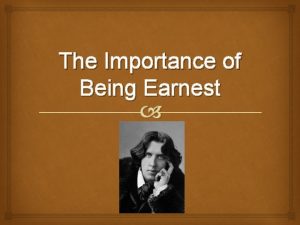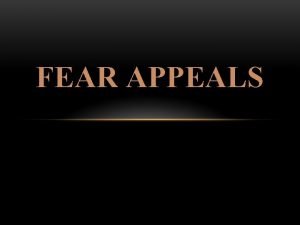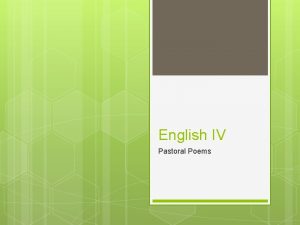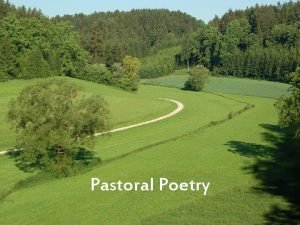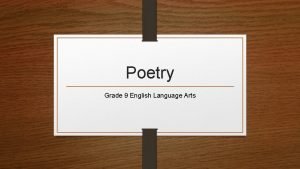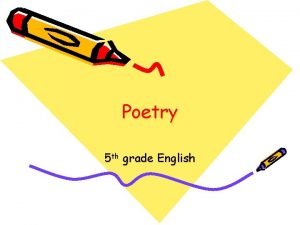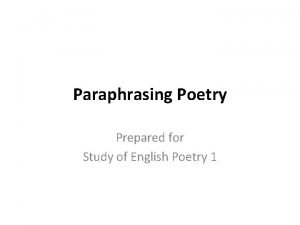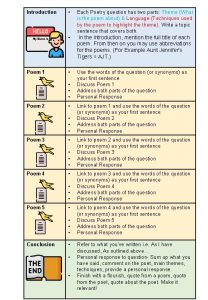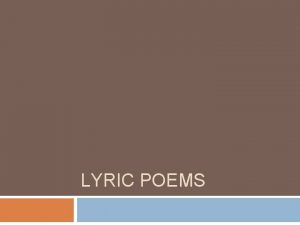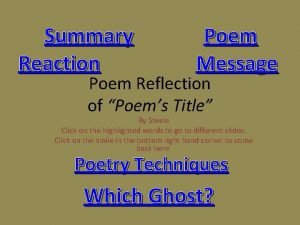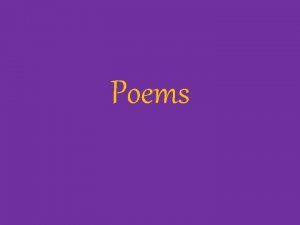English IV Pastoral Poems The Pastoral Poem Portrays








- Slides: 8

English IV Pastoral Poems

The Pastoral Poem Portrays the life of shepherds in idealized rural settings Details pastoral life Uses nature imagery Imagery conveys emotions and ideas Romanticizes the shepherds’ lifestyle Used by Renaissance poets to express feelings and thoughts about love, death, mockery of politics, and the ideals of country life.

Rhyme, Meter, and Diction The rhyme and meter of pastoral poems gives them a musical or songlike quality. The speakers use courtly speech. The speaker in a poem is the voice that addresses the reader, which is not the same as the poet. For example, a nymph does not actually write “The Nymph’s Reply to the Shepherd. ” Likewise, Sir Walter Raleigh was not a nymph (as shocking as that is).

The Pastoral Poets The pastoral style was created by urban poets who idealized country life. The poems are more of a fantasy of what county life would be life, based on the ideas of city-dwelling poets. The poets tend to focus on the more relaxing tasks of country people, such as watching over sheep. The poems do not detail the hardness of country life or the work necessary to maintain it.

The Passionate Shepherd to His Love by Christopher Marlowe Come live with me and be my love, And we will all the pleasures prove, That Valleys, groves, hills, and fields, Woods, or steepy mountain yields. A gown made of the finest wool Which from our pretty Lambs we pull; Fair lined slippers for the cold, With buckles of the purest gold; And we will sit upon the Rocks, Seeing the Shepherds feed their flocks, By shallow Rivers to whose falls Melodious birds sing Madrigals. A belt of straw and Ivy buds, With Coral clasps and Amber studs: And if these pleasures may thee move, Come live with me, and be my love. And I will make thee beds of Roses And a thousand fragrant posies, A cap of flowers, and a kirtle Embroidered all with leaves of Myrtle; The Shepherds’ Swains shall dance and sing For thy delight each May-morning: If these delights thy mind may move, Then live with me, and be my love.

Discussion Points What is the tone of the poem? What are some examples of the idealized setting? What all does he offer to show the nymph? How does the shepherd convey the eternity of his love? What about the nymph does he seem to focus on?

The Nymph’s Reply to the Shepherd If all the world and love were young, And truth in every Shepherd’s tongue, These pretty pleasures might me move, To live with thee, and be thy love. Thy gowns, thy shoes, thy beds of Roses, Thy cap, thy kirtle, and thy posies Soon break, soon wither, soon forgotten: In folly ripe, in reason rotten. Time drives the flocks from field to fold, When Rivers rage and Rocks grow cold, And Philomel becometh dumb, The rest complains of cares to come. Thy belt of straw and Ivy buds, The Coral clasps and amber studs, All these in me no means can move To come to thee and be thy love. The flowers do fade, and wanton fields, To wayward winter reckoning yields, A honey tongue, a heart of gall, Is fancy’s spring, but sorrow’s fall. But could youth last, and love still breed, Had joys no date, nor age no need, Then these delights my mind might move To live with thee, and be thy love.

Discussion Points What is the tone of the poem? What are some examples of an idealized setting? What does the nymph say will destroy the shepherd’s natural pleasures? What does the nymph tell the shepherd that she will need from him in order to become his love? How does the speaker in this poem differ from that of the previous poem? Do you think that the nymph and the shepherd could ever be together? Why or why not?
